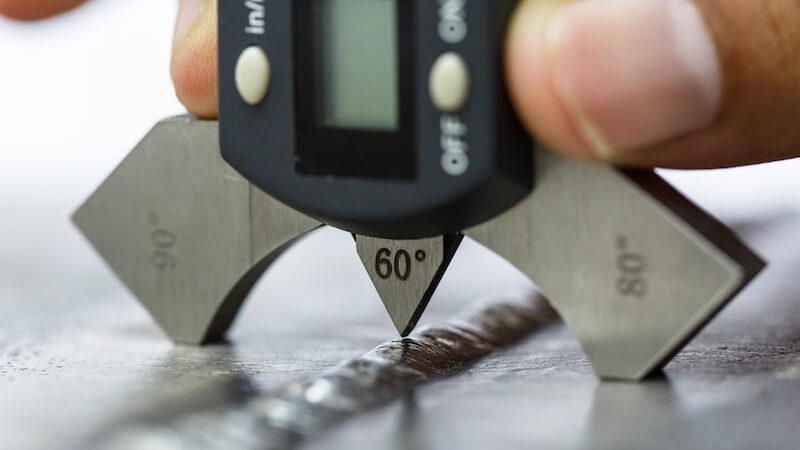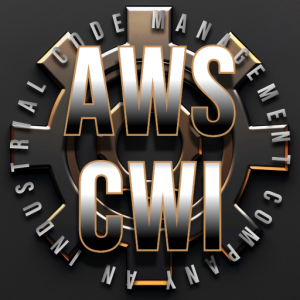Why Pick Professional Welding Inspection Gilbert Arizona for Your Projects?
Why Pick Professional Welding Inspection Gilbert Arizona for Your Projects?
Blog Article
Discovering the Value of Welding Inspection in Industrial Applications: Securing Versus Failures and Enhancing Long Life
Welding examination acts as a crucial line of defense in industrial applications, making sure the structural honesty and integrity of welded parts. By systematically determining issues such as porosity and incomplete blend, inspections not only protect against failures however additionally prolong the life expectancy of crucial assets. Complying with market criteria enhances both safety and operational performance; nevertheless, the implications of neglecting these methods can be severe. As we analyze the diverse benefits of regular assessments, it becomes apparent that comprehending these characteristics is not just an issue of conformity yet a calculated important for durability and danger mitigation.
Role of Welding Assessment
Welding assessment acts as a vital protect in industrial applications, ensuring that bonded structures meet defined requirements of high quality and safety. This procedure includes a systematic examination of welds to validate their stability, strength, and conformity with well-known codes and specs. The role of welding inspection is complex, including both visual analyses and non-destructive testing methods, which might consist of ultrasonic, radiographic, or magnetic bit testing.
Reliable welding examination determines prospective issues early, mitigating the risk of tragic failures that can emerge from inadequate welds. By guaranteeing that welds are performed according to develop specs, inspectors add to the general architectural dependability and durability of elements in essential applications, such as pressure vessels, pipes, and structural structures.

Common Welding Flaws

Among the most widespread flaws is porosity, identified by little gas pockets entraped within the weld metal. This occurs as a result of contaminants or inappropriate protecting gas, endangering the weld's strength. Another significant flaw is incomplete fusion, where the weld metal fails to bond correctly with the base product, potentially causing architectural weaknesses.

Cracks can additionally create during or after the welding procedure, usually associated to thermal tensions or improper air conditioning rates. In addition, undercutting, where the base metal is worn down along the weld bead, can compromise the joint and is typically brought on by too much heat input or wrong technique.
In addition, lack of infiltration takes place when the weld steel does not reach the root of the joint, leading to inadequate stamina. Understanding these typical defects is critical for welders and assessors alike to make sure that bonded structures fulfill safety and performance criteria, ultimately stopping possible failures in commercial applications.
Advantages of Regular Assessments
Normal examinations act as a vital guard in ensuring the dependability and durability of bonded frameworks. These evaluations determine possible defects and weaknesses that may endanger the honesty of welds, permitting timely remediation prior to concerns escalate. By executing an organized examination regimen, companies can significantly decrease the threat of tragic failures that might cause costly downtime, devices replacement, and even accidents.
Moreover, regular examinations add to boosted high quality control throughout the welding process. By sticking to a constant examination routine, companies can make certain that their welding practices meet established quality benchmarks and ideal techniques. This not just promotes a culture of responsibility however also encourages continual renovation amongst welding workers.
On top of that, normal assessments assist in much better maintenance preparation. By recognizing damage early, companies can purposefully arrange repair work and replacements, reducing disruption to operations. This aggressive approach inevitably go now causes prolonged property life expectancy and improved total productivity.
Last but not least, a commitment to normal evaluations can boost a company's online reputation in the market. Stakeholders and customers significantly value organizations that focus on safety and security and high quality, consequently improving count on and possibly resulting in boosted business chances.
Market Criteria and Laws
Following industry requirements and laws is a fundamental element of welding examination that complements the advantages of regular examinations. These criteria, established by organizations such as the American Welding Society (AWS) and the American Culture of Mechanical Designers (ASME), give a structure for finest techniques in welding processes, materials, and evaluation methods. Conformity with these laws ensures that welds meet the required high quality and security criteria, significantly decreasing the risk of structural failures.
Regulative bodies like the Occupational Security and Health Administration (OSHA) better enforce standards that protect employees and the setting throughout welding procedures. By following these established standards, industries can boost the integrity of their parts and frameworks, ensuring they execute as planned under numerous functional conditions.
Additionally, adherence to market requirements fosters uniformity in quality assurance, helping with smoother communication among stakeholders and governing firms. This positioning not only minimizes responsibility threats but additionally enhances the integrity of organizations in affordable markets. Welding Inspection Gilbert Arizona. Inevitably, conformity with welding criteria and guidelines is not just a lawful responsibility; it is an important investment in safety and security, efficiency, and long-term functional success
Future Trends in Welding Evaluation
As markets continue to develop, the future of welding inspection is positioned to integrate innovative innovations that enhance precision and effectiveness. One of one of the most significant fads is the adoption of automation and robotics in examination processes. Automated systems can perform assessments quickly, lowering human mistake and boosting throughput in manufacturing atmospheres.
Moreover, the assimilation of expert system (AI) and artificial intelligence formulas will certainly allow anticipating analytics, allowing for real-time evaluations and aggressive maintenance. By examining information from previous inspections, these innovations can recognize patterns that could suggest possible failures, thereby prolonging the lifespan of bonded parts.
Additionally, non-destructive testing (NDT) strategies are anticipated to become much more innovative, making use of devices such as drones and autonomous automobiles outfitted with cutting-edge sensors. Welding Inspection Gilbert Arizona. These innovations will certainly enhance the ability to examine hard-to-reach or hazardous locations without endangering safety and security
Furthermore, the trend towards digitalization will result in enhanced information monitoring systems that promote better monitoring, reporting, and conformity with sector standards. In recap, the future of welding inspection is characterized by technical innovations that assure to dramatically boost dependability, security, and functional effectiveness in different industrial applications.
Conclusion
To conclude, welding inspection offers a vital function in ensuring the honesty and sturdiness of bonded structures across numerous industrial applications. By determining problems such as porosity and incomplete blend, routine examinations play a considerable function in risk mitigation and quality control. Adherence to industry standards and regulations better enhances functional security and reliability. As developments in innovation Discover More remain to advance, the future of welding assessment guarantees increased precision and efficiency, inevitably adding to the long life of essential facilities.
Welding evaluation offers as a vital line of protection in commercial applications, guaranteeing the architectural integrity and dependability of bonded parts.Welding try this site evaluation offers as a critical safeguard in commercial applications, ensuring that bonded structures satisfy defined criteria of quality and security. Eventually, the role of welding assessment is indispensable in promoting safety and security, boosting performance, and safeguarding investments in industrial facilities.
These criteria, developed by organizations such as the American Welding Society (AWS) and the American Culture of Mechanical Engineers (ASME), offer a framework for finest practices in welding processes, materials, and assessment strategies.In verdict, welding examination offers a vital function in ensuring the integrity and sturdiness of bonded frameworks across different industrial applications.
Report this page